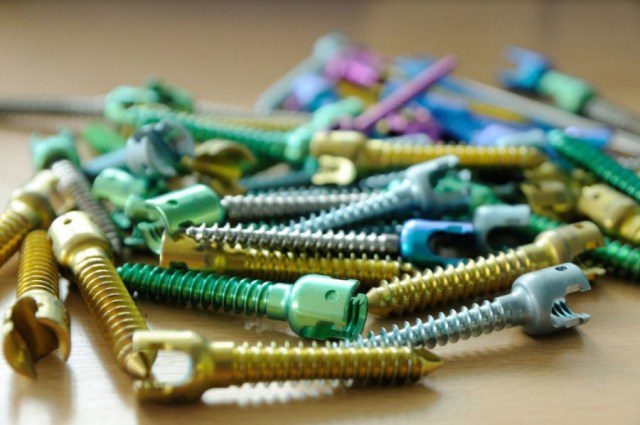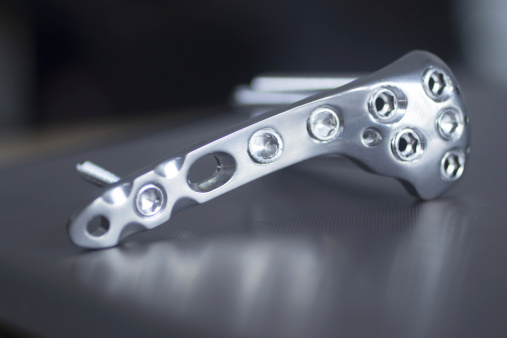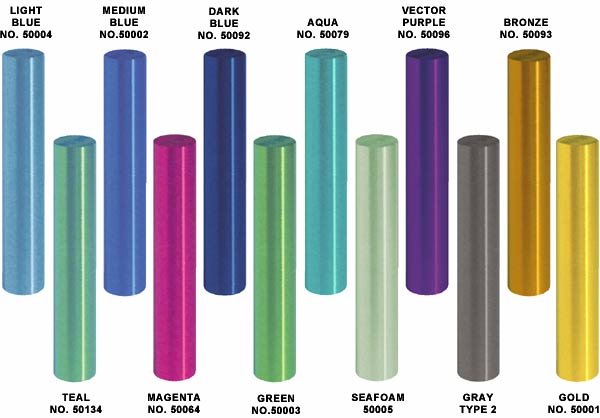TITANIUM COLOR ANODIZING – Used extensively in Orthopaedics when it is desired to “color code” or otherwise identify implants. This process yields a number of colors that are attractive, functional and reproducible in both alloyed and CP (commercially pure) titanium products. Combinations of color and Type 2 anodizing are possible on the same part using masking/selective anodizing techniques to provide a unique product look and to incorporate features for identification, orientation, or design considerations. Advantages and Features of Titanium Anodizing. The Finish of Choice for Orthopaedic Implants.


TITANIUM ANODIZING (TYPE 2) – Titanium’s tendency to gall during mechanical sliding or rubbing action (part on part applications) is reduced by this coating due to the added lubricity. In addition, an increase in fatigue strength up to 20% can be achieved and significant improvement in surface finish can be realized without additional mechanical finishing operations. Corrosion resistance is unchanged by this treatment and the coating is minimally reflective, properties desirable in certain marine applications. Non-Toxic and Bio-Compatible Type 2 Titanium Anodizing, an implant requirement. Advantages of Type 2 Titanium Anodizing.
TITANIUM ANODIZING PLUS (ICC) INTEGRATED COLOR CONTROL
Danco’s exclusive Integrated Color Control (ICC) system provides unequaled color consistency in titanium color anodizing. Since the entire spectrum of colors lie within 5 millionths of an inch of coating thickness, it is little wonder that variation within any single color is very difficult to control.
CONSISTENT COLOR – Slight variations in processing controls have traditionally caused color differences perceptible to the human eye, yet Danco’s ICC System delivers consistent colors in day to day, and lot to lot, production cycles based on light refraction rather than the human eye’s ability to see. By the use of automatic controls, the ICC System eliminates the human factor where the critical points of the process are most important, thereby producing parts that consistently pass color comparisons when inspected with the X-Rite SP60 Series Sphere Spectrophotometer.
FEWER REJECTED PARTS – Color rejects are virtually eliminated (typically a high percentage of complaints from industry users), while at the same time, increased efficiency and rapid turnaround are enhanced. Color Considerations, Color Selection Guide.

STERI-GRAPHICS – Today’s advanced sterilization processes tend to cause fading of dyed anodized parts. Steri-Graphics, an exclusive process of Danco, was developed in cooperation with Advanced Sterilization Products, a division of Johnson & Johnson. Steri-Graphics not only enhances the appearance of these medical tools, but protects logos, nomenclature, or other graphic features from fading after repeated Sterrad® sterilization cycles. This process provides the medical industry with a variety of anodized finishes that will not only enhance your product’s quality, appearance and durability, but has been tested and approved for total compatibility with the Sterrad® Sterilization System. On a clear or gold anodized background, color graphics options include black, red, gold, green and blue marking capability. Other titanium parts are color anodized for ease of product size identification, or for cosmetic appeal. Laser marking may be done on curved or flat surfaces.
SPECIFICATIONS
TITANIUM ANODIZING
AMS-2488 – Type 2 Coating
DPP-5358 – Proprietary Titanium Anodized Coatings: Color
